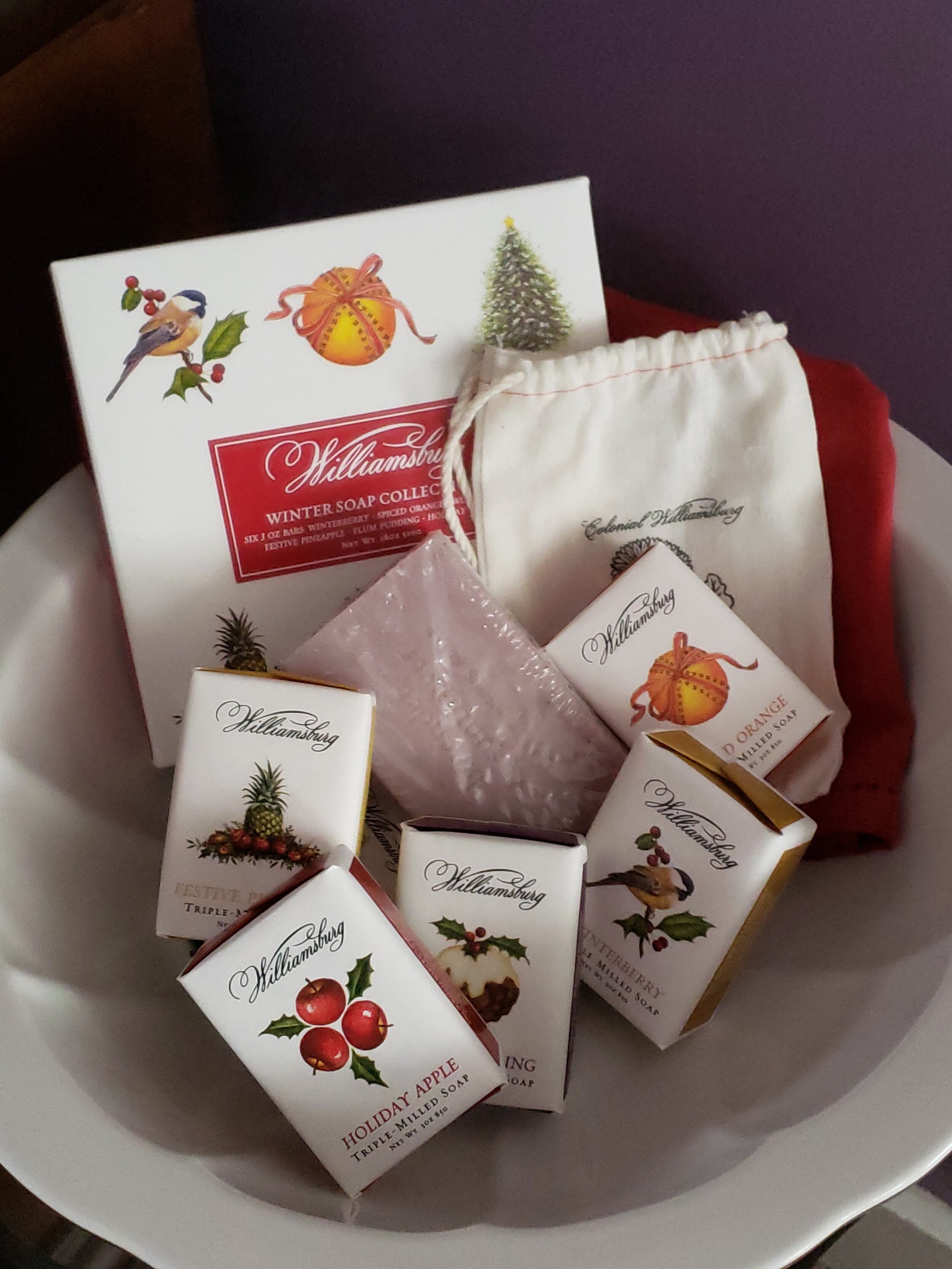
Soap
From the beginning of the Revolutionary War, George Washington demonstrated concern for his men’s health and well-being. Among his many written orders on the subject, Washington included instructions to maintain cleanliness of the body and the army’s campsites. Strict punishment was outlined for those who did not. Dr. Benjamin Rush of the medical department first published his pamphlet entitled, “Directions for Preserving the Health of Soldiers,” in 1777, which outlined numerous ways for soldiers to keep in good health, including staying clean and dry. Many of those recommendations are common sense to us today but were novel at the time.
However, only wealthier families could afford to purchase soap intended for bathing. These would have been imported to America in scented, oil-based bricks.
The average American might have soap for laundering clothes and linens but not the body. Because laundry soap was ash-based, the process of making a ball of soap might be skipped. A woman laundering clothing would simply dunk the clothing in a wash bucket to soak. The bucket would then be covered with cloth, and ash placed on top of the cloth. Hot water would be poured over the ash to drain into the bucket of clothing so as to soak away sweat, dirt, etc.
As such, when Savvy asks Jonathan for soap to clean her face in Witness to the Revolution, he would appraise her as being from a family whose financial means were greater than average.